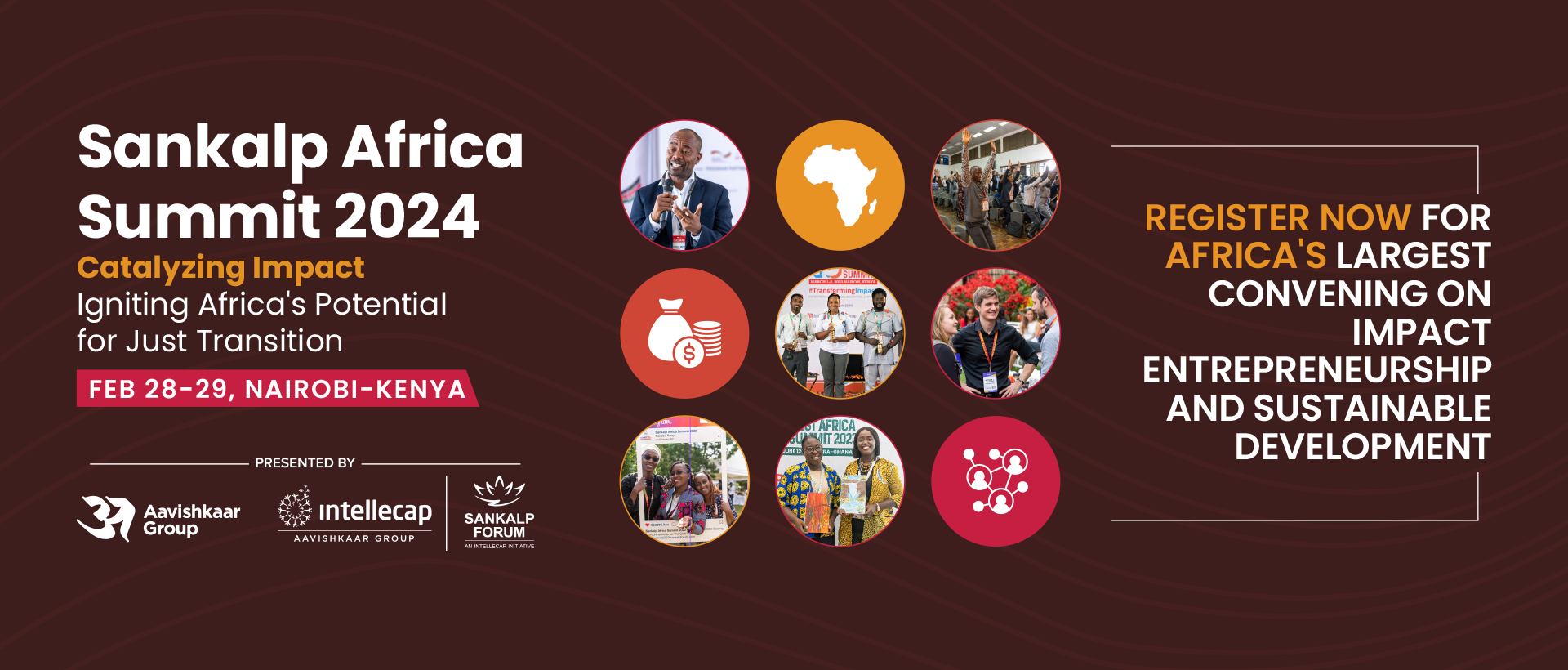-
The Economic Times
| April, 22, 2022Why businesses need to embrace sustainability & prioritise the planet
Read More -
The Ken
| April, 13, 2022Can Aavishkaar go where angels (and VCs) fear to tread? Interview of Vineet Rai, Founder and Chairman, Aavishkaar Group in The Ken
Read More -
KrishiJagran
| April, 01, 2022Impact of Data Governance and Sovereignty on the Livelihoods of Smallholder Farmers: Article by Mayur Varandani and Ravi Gupta, Intellecap in Krishi Jagran
Read More -
Theinterviewportal
| March, 25, 2022The Interview Portal’s latest ‘Social Impact Consulting Professional’ features Bhushan Patil, Associate, Intellecap
Read More -
The Better India
| March, 24, 2022The Better India webinar on ‘Girl Child Education: Gearing for Tomorrow ‘ featuring Shailesh Nagar, Associate Director, Intellecap.Watch the Video.
Read More -
Financial Express
| February, 09, 2022New IFC and Intellecap Report highlights INR 836 Billion Investment Opportunity for Financial Institutions in Women Owned Very Small Businesses (WVSEs). Coverage in Financial Express, CNBC-TV18, Business Standard and others
Read More -
The Economic Times
| January, 27, 2022Hyderabad based AgriTech startup ‘Our Food’ raises US$ 6Mn. Transaction enabled by Intellecap
Read More -
CNBC TV 18
| January, 25, 2022Funding Rundown: Darwinbox enters unicorn club, Google plans to invest in Airtel and Germany’s KfW launches $250 mn ESG First Fund
Read More -
thequint
| January, 21, 2022Why Do Women Farmers Still Lack Access to Agricultural Land Ownership? Listen to the latest Quint Podcast featuring Pranab Ranjan Choudhury, Intellecap
Read More -
avpn
| January, 14, 2022Towards Gender-Inclusive Investing: A Co-Design Approach- Article in AVPN by Amar Gokhale, Intellecap, Jona Repishti & Saida Benhayoune from MIT D-Lab
Read More - The impact of the COVID-19 pandemic and the subsequent closure of schools, on girl child education, and how organisations have tried to remedy it
- Technology has proven to be a game-changer during the pandemic helping several sectors cope. But has it been the same for girls, especially those from under-resourced backgrounds?
- It takes a village to raise a child, especially a girl child. So, how do community-led initiatives by various stakeholders contribute to ensuring girls are empowered and enabled to carve their own futures.

Why businesses need to embrace sustainability & prioritise the planet
April 22nd, 2022: On the occasion of Earth Day, Venkat Kotamaraju, Director, Circular Apparel Innovation Factory was on a Special Earth Day panel discussion with ET Rise, talking about ‘Why businesses need to embrace sustainability and prioritise the planet’
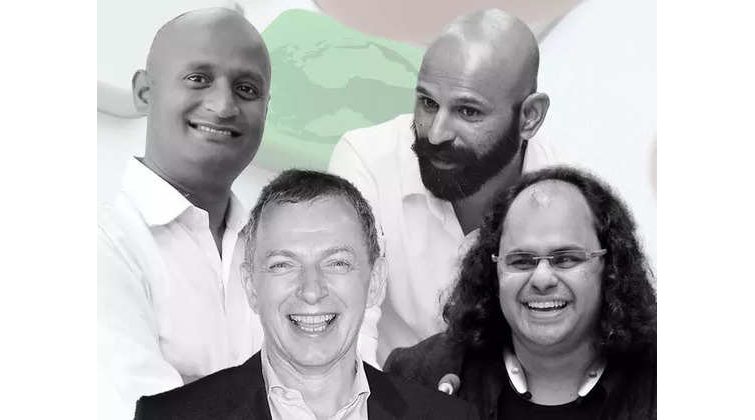
There is increasing awareness that businesses need to be sustainable and ensure they do not have a negative impact on the environment and the society. With the United Nations spelling out the Sustainable Development Goals (SDGs), there is a clear, well-defined path for different stakeholders to undertake the sustainability journey. It is also increasingly clear that being green is also good for business.
In the Earth Day webinar, Venkat was joined Rene van Berkel, Representative, UNIDO in India, Mahadev Chikkanna Founder CEO, Mynusco, and Kunal Sood, founder of WeThePlanet, talking about sustainable business in India and the way forward.
Watch the video on ET Rise – Click here

Can Aavishkaar go where angels (and VCs) fear to tread? Interview of Vineet Rai, Founder and Chairman, Aavishkaar Group in The Ken
Mumbai, 13th April: Recently The Ken interviewed Vineet Rai , Founder and Chairman, Aavishkaar Group on how India’s best known impact investor is raising the world’s largest carbon-only fund, which will sequester carbon in trees and give returns to its LPs in Carbon.
Through the interview, the Ken finds out, what does Vineet Rai know that the EU and World Bank don’t ?
Trees can cool the planet. They can also buy us some time. Or can they?
Last week, some banner news neatly aligned on an arc that was quite revealing.
India’s largest impact investor, Aavishkaar, raised its latest fund. Sized at Rs 1,000 crore ($130 million), Aavishkaar says the fund will “also focus” on climate. But when I spoke with Aavishkaar founder Vineet Rai, I learned that it will only “opportunistically” invest in climate-related ventures.
However, there’s a bigger, and I must add, more interesting fund that he is raising. If all goes well, by December this year, he will launch the US$300-US$500 million Carbon First Fund. Which, you guessed it, will deal with carbon units even while returning capital to its investors. Meaning, investors will get their returns in carbon units unless they specifically ask for cash.
Meanwhile, in the rich world, the punt on capturing carbon grew bigger. Climeworks, a Switzerland-based D2C (direct-to-capture) startup, raised US$650 million from a bunch of professional and corporate investors. One of the few companies in the world to capture CO2 from air and inject it deep underground for permanent storage, Climeworks’ scale is very modest today—4,000 tonnes of carbon captured per year, which is equivalent to the Co2 emissions from 600 EU residents.
Finally, if you missed it—or consciously avoided it, for which I wouldn’t blame you—the UN’s Intergovernmental Panel on Climate Change (IPCC) released its third report on climate change. This time, with many solutions for mitigating its impact. Among other things, the report says greenhouse gas emissions must peak by 2025. That is, we have just about 30 months to keep the hope of limiting warming at 1.5°C above pre-industrial levels alive.
So, Aavishkaar’s timing is right.
But what else does Rai aim to get right, knowing that most carbon credit schemes so far have oversold and under-delivered?
When climate change blunts impact investment
Focused on humans, Aavishkaar was started 21 years ago “with the idea of making the poor rich”.
A lot of its social impact investments over the years can be categorised as climate change-alleviating investments, but Rai is quick to dismiss this. For instance, he says, the fund invested in a waste-recycling startup called Nepra not because it was good for the climate, but because it wanted to help ragpickers.
But in the last few years, Rai and his team have seen climate change un-doing much of their social impact work. “It was like we were building a sandcastle which was getting washed away by the waves,” he says. Since the fund also has a microfinance unit, Arohan, Rai could see that states such as Orissa and Bihar had to deal with cyclones and floods every other year. Insurance provided relief to an extent, but farmers faced enormous damage.
What they started realising, he says, is that however much work was done on the human side, the damage from the climate is now “sustained” and consistent.
Rai went back to the drawing board. The goal was to figure out ways in which the fund could intervene with climate change “as its first port of call”. But the work would still be impactful.
“The more time we spend, the more we realise that the best tech in the world to clean up carbon is to plant trees, it’s way superior than anything Elon Musk can consider”
Today, Rai says Aavishkaar is more than half way to raising a large fund—which it claims is the largest carbon-only fund in the world—that could be anywhere between US$300 million and US$500 million.
His math goes like this: it costs US$4 to grow a tree in India versus US$16-US$17 in Europe. The carbon credits that a tree can fetch would be between US$12-US$50 depending on the type of sequestration that is required, and the market is going to grow exponentially. Rai says that 15,000 global companies “declaring to become carbon-neutral or net-zero in the next two-three decades” will create an acute supply crunch for negative carbon emissions.
In principle, he is right. The new IPCC report says ecosystem restoration—which includes afforestation and forest cover restoration—has the maximum potential to mitigate climate change. Yet, it has received the least amount of venture capital investment globally.
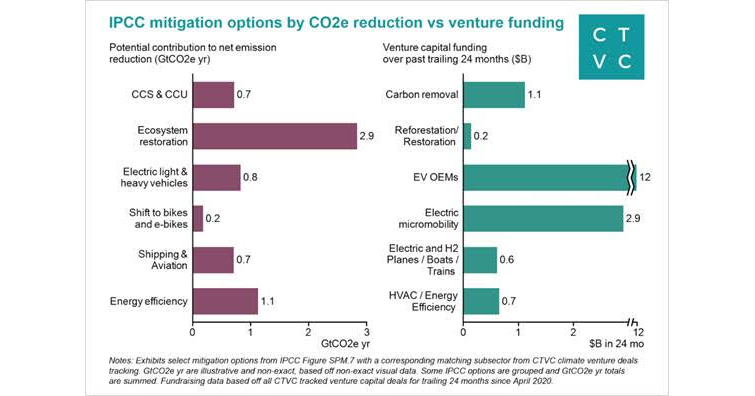
While the chart above reflects global trends, India is no different. As we wrote earlier, in the 22 months up to November 2021, 66% of all the investments in India in the name of climate tech (or clean tech) went into electric vehicles and mobility, which has the least impact on carbon dioxide reduction. Yet, risk capital continues to flow into e-mobility. (If you’ve watched electric two-wheelers go up in flames and are wondering why everyone and their aunt got on the EV gravy train, you have company.)
Some VCs tell me risky and transformative climate tech investment in India is a few years away.
“Why should private investors fund this? Money is not for doing good, it is for making more money,” Rai quips. “But there are fools like me who will do it. You need to create a crop of dumb idiots who have other priorities than just making money.”
But it’s not like such projects are exactly new in India.
Carbon credit projects have a dud record
Planting trees for concerted carbon removal is at least a decade-old practice. India, in fact, has the largest share of such projects globally at 28%—or 19 out of the 67 initiatives worldwide that are registered as afforestation/reforestation clean development mechanism (A/R CDM) projects.
Incidentally, last year, a series of studies poked holes in not just Indian carbon credit projects but also some high-profile initiatives globally. This also includes one in California in the US which over-counted how much carbon was being sequestered due to forests.
In India, a 2021 study by IIM Lucknow professor Ashish Aggarwal into two such large forest carbon projects showed that both have failed to sequester carbon in line with initial estimates. In Haryana, just 37.45% of the projected target was sequestered in 12 years; in Himachal Pradesh it was only 3% after nearly 14 years. The two projects are being supported by the European Union and the World Bank, respectively.
On the three stated key objectives—mitigation of global warming, improvement of local environmental conditions, and livelihoods of local communities—neither project can be called successful.
| In Haryana, the proponents could not get the projects verified by a third party for the issuance of carbon credits because villagers had started uprooting the plantations due to economic losses… The available empirical evidence from across the globe also suggests high costs and mixed results on carbon from the forest carbon projects. Hence, it is imperative to revisit the established narrative of ‘big and cheap carbon’ with the robust empirical evidence before further scaling up of the forest carbon projects |
| ‘Carbon’ in forest carbon projects: Evidence from India, Climate and Development |
When I asked Rai about this study, he seemed unaware, but he also appeared unfazed by the findings. In government-backed projects, he says, funds are generally misused. “The role of our fund will be to direct capital to trees. Because this is the only thing that will save you.”
Aavishkaar’s idea is to bring professional services and expertise to afforestation and reforestation programmes. For instance, if someone wants to make the mangroves in Mumbai denser, the fund would bring in capital and work with the state forest department to rope in professional capabilities for management and measurement.
There’s nothing complicated in growing trees, it will reduce carbon, Rai says emphatically. As a trained forest professional, he is putting money where his real-world experiences lie. And he says he will get “very long-term” capital to the poor of Asia; it’s going to be a 15-year fund, not the regular seven-year fund that most investors work with.
Rai has seen up-close what can be achieved in the long term. “When we first did microfinance in 2002, India’s total outstanding was Rs 100 crore (~US$21 million then), today it’s Rs 300,000 crore (~US$40 billion). Banks used to laugh about microfinance, today RBI doesn’t tire of talking about it. It has happened in front of my eyes,” says Rai.
Ditto agri-tech.
When he made the first agri-tech investment at Aavishkaar in 2008, “people fell off their chair”. Today there are 700 agri-tech companies in India, he says.
The world has to get on an accelerated path to carbon reduction. For the last 20 years, climate remained a global discourse on policy; it was never a capital discourse. That changed with the COP26 summit in Glasgow, Scotland. “Now there’s a serious acceptance that it has become a capital discourse. In the next 10-15 years you will see significant change,” says Rai.
Never underestimate the power of an investor, especially an impact investor. Let’s just say the optimism is Greta Thunberg-esque.
What caught our eye
Of the 76 economies ranked on their readiness for a low-carbon future, Europe leads the pack with 16 countries in the top 20. India is among the laggards and is one of the 20 countries that are making uneven progress.
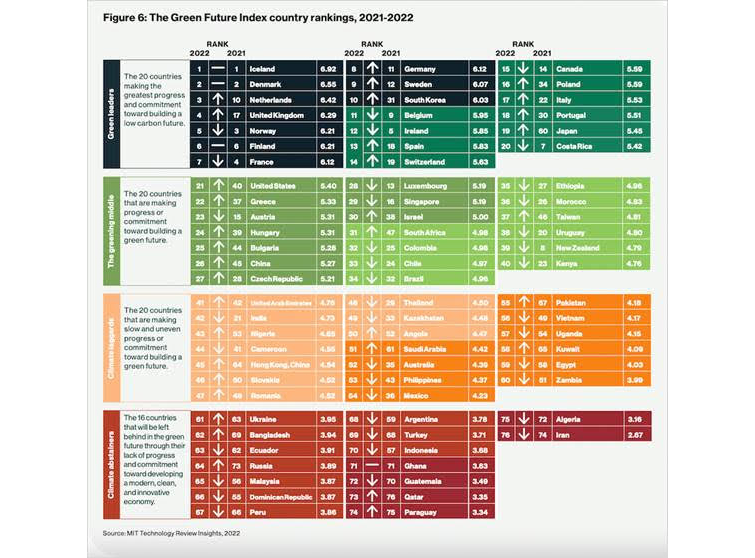
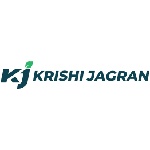
Impact of Data Governance and Sovereignty on the Livelihoods of Smallholder Farmers: Article by Mayur Varandani and Ravi Gupta, Intellecap in Krishi Jagran
Mumbai, 1st April– As part of the continued dissemination around the ICTforAg 2022 summit, Mayur Varandani , Manager Intellecap and Ravi Gupta, Senior Associate, Intellecap wrote about, “Impact of Data Governance and Sovereignty on the Livelihoods of Smallholder Farmers”
Data analysis is a growing trend across industries, making it a critical part of improving business operations and decision-making. Myriad forms of data are enabling businesses to understand and anticipate customer needs, get insights into new geographies and customer segments, optimize resources, and make better decisions.
The agriculture sector is no different when it comes to the usage of data analytics. The sector has witnessed an increasing use of digital solutions such as precision agriculture, blockchain technology, and IoT to capture, facilitate, analyze, and enable decision-making on various activities across the supply chain. These solutions are driving a shift towards improving crop yields, mitigating the effects of climate change, increasing efficiency in resource utilization, and aligning with consumption demand in agriculture.
The current state of data ownership and governance in agriculture
There are more than 500 million smallholder farmers worldwide, playing a significant role in food production and food supply. These smallholder farmers generate and may collect data on soil health, seed and fertilizer use, the time required to carry out field operations, production practices, and irrigation data. Data generators or service providers such as research institutions, government/ NGOs, and commercial service providers/ companies are also increasingly capturing this data either through direct interaction with farmers or by using mobile phones and/or remote sensing technologies to develop digital farmer profiles.
Some of these profiles contain comprehensive data, which are made accessible–sometimes on a commercial basis–to multiple service providers, such as input providers, financial institutions, agro-processors, government agencies, and farmer cooperatives. Service providers may also develop products and services by undertaking data analysis to provide farmers with better inputs, timely and low-cost access to finance, and efficient price discovery. However, this increasing collection, storage, and usage of data have given rise to concerns around the ownership and governance of farmer and farm data. Questions remain in terms of who decides how that data is used and shared, who benefits financially from said data, and what rights farmers have to access, delete, and control data about them and their farmers that are held by third parties.
Challenges faced by smallholder farmers in data governance and ownership
Many smallholder farmers face capacity restraints in fully utilizing data collated from their agricultural activities. There are multiple reasons for this, but some of the main ones include insufficient regulatory guidance on data privacy and security, lower literacy level, insufficient knowledge and awareness of how their data is stored and used by service providers, and a lack of farmer-centric data governance models. Apart from capacity-related challenges, smallholder farmers also face data ownership and control challenges, which impact their willingness to adopt digital solutions. According to the GFAR study “Rights of farmers to data, information, and knowledge,” access to information is mainly limited to large-scale farmers and service providers. While much of the data is generated by smallholder farmers, it’s generally gathered by government agencies, research organizations, NGOs, financial institutions, and development organizations. Since farm data is often sensitive and not something that farmers are willing to share, they may be reluctant to share certain data, particularly if that data will then be used and potentially owned by another party. This may put them in the position of either having to forgo access to beneficial digitally-enabled services unless they are aware and are willing to trade their data for access.
Given these challenges, there is an immediate need to design frameworks or processes for data governance and ownership that put the needs of farmers at the center. Putting in place policies around governance and inclusion will also drive the adoption of innovative and farmer-friendly data analytics solutions in the agriculture sector, thereby improving livelihoods and increasing income for smallholder farmers, while also benefiting service providers and other agriculture stakeholders through creating a fair and competitive market for service delivery.
Some ways stakeholders are addressing these issues
Overcoming issues around data governance and ownership requires a multi-pronged approach from all relevant stakeholders, including research institutions, policymakers, donors and development organizations, corporates, and data collection & analytics companies. Some well-known initiatives undertaken by organizations across the globe include the Voluntary Code of Conduct by the National Farmers’ Federation, Australian Farm Data Code, the EU Code of Conduct on Agricultural Data Sharing by Contractual Agreement, and the US Privacy and Security Principles for Farm Data.
Apart from developing codes and principles, some regions are also forming Farm Data Cooperatives. These farmer cooperatives pool and store members’ data and provide organization control over the flow of data. Farmers’ data cooperatives include Ag Data Coalition, Grower Information Services Cooperative and the Farmers Business Network in the United States, and JoinData, Dutch data cooperative.
Some not-for-profit development organisations and development agencies have also designed programs that enable farmers to interact with their data. For example, Digital Green’s “FarmStack” is a free open-source software for data exchange to share data directly and securely without any third-party involvement. It also provides users with full control over data. Digital Green is using FarmStack to create a secure marketplace for the sale of agri products in India and Ethiopia.
The Feed the Future Ghana Agricultural Development and Value Chain Enhancement (ADVANCE II), which was implemented by ACDI/VOCA, used innovative, locally-sourced farmer identification smartcards owned by the farmer, which was shared with the farmer’s consent.
Some private players are also using technologies such as AI and blockchain to enable farmers to store their own data on a secure distributed database. For example, Farmobile, a US-based agriculture data collection and software provider, has developed an ownership framework that governs farm data ownership and exercises control through a legal agreement that asserts who can edit and access that data. Farmobile DataEngine platform provides data ownership rights to the farmers, through which they can keep their data with themselves or can share with service providers or advisors and can also monetize it. Similarly, Conservis- a software-based farm management service provider gives the data ownership rights to the farmers. The company can only share farmers’ data after their authorization.
With the increasing rate of technological advancements in the agriculture sector, data at different stages of the supply chain will become even more critical for planning and decision-making. Hence, there is a need to have a multi-stakeholder discussion on data governance where each stakeholder shares their concerns and suggestions to strengthen a common vision for the coherent implementation of existing data practices and policies across geographies.

The Interview Portal’s latest ‘Social Impact Consulting Professional’ features Bhushan Patil, Associate, Intellecap
Mumbai, 25th March– The Interview Portal, as part of a feature around ‘Social Impact Consulting Professional’ spoke to Bhushan Patil, Associate, Intellecap.
The interview gives us a glimpse of what he loves doing and what gave him the inspiration to pursue a career in the environment and development sector.
The interview not only showcases his journey but also serves as a guiding light for young professionals or students trying to work for the development sector.
Our formative years play a crucial role in linking our childhood interests and aspirations to a larger vision for our career
Bhushan Patil, our next pathbreaker, Social Impact Consultant at Intellecap, provides innovative business solutions that help build and scale profitable and sustainable enterprises dedicated to social and environmental change.
Bhushan talks to Shyam Krishnamurthy from The Interview Portal about his engineering thesis based on his childhood experiences that gave him the inspiration to pursue a career in the environment and development sector.
For students, look around yourself to understand what excites you, what motivates you and what inspires you, and then channelize your energy to go after your
Bhushan can you take us through your background?
I was born and brought up in Nagpur, the city of oranges. Growing up in a joint family taught me the value of building and sustaining relationships early on in my life. While I lived with my immediate family in Nagpur, we used to frequently visit my Aaji’s place in a nearby village. My fondness for her and the many stories she told me gradually translated into a fondness for rural and agrarian life.
I spent the formative years of my schooling in Jawahar Navodaya Vidyalaya. These are central government residential schools that provide free-of-cost education to selected students from low-income backgrounds. The school was located in the foothills of Satpura mountain range surrounded by pristine water bodies, which further contributed to establishing my love for natural surroundings.
Life at JNV has always been focused on the all-round development of the students. Throughout my time at JNV, I was involved in multiple extracurricular activities, be it representing students as house captain or representing my school at regional level sports meets. In terms of study specialization, I opted for PCM (Physics, Chemistry, and Mathematics) primarily due to my keen interest in understanding the physics behind everything. The constant curiosity and love for physics have helped me in my future journey as an engineer.
Additionally, the school’s motto “come to learn, go to serve” and the fact that the majority of students came from rural or minority backgrounds instilled in me a sensitivity towards community, inclusion, and equity which guides my professional outlook to date.
What did you do for graduation/post-graduation?
I realized I had an analytical and scientific temperament during my school days and that’s why I decided to pursue a Bachelor of Engineering for graduation. I chose Mechanical Engineering and participated in a lot of hands-on projects. One such key project was my major thesis in the final year of engineering.
As I described earlier, spending vacations in my Aaji’s village exposed me to the plight of farmers. I observed frequent power cuts, long working hours, unreliable rains, and long spells of drought in the village. This became my inspiration to use my engineering thesis to design something that can be put to use by the vulnerable farmers of Vidarbha. I discussed it with my friends and faculty and came up with the idea of a solar-powered seed sowing machine. I first built a prototype and then compiled my efforts into a research paper, and published the findings in an internationally reputed journal.
This small victory gave me an insight into the environment and development sector as a career option. At the end of engineering, when all my friends were appearing for job interviews I chose to opt-out of the campus placements. I further explored my passion, searched for colleges and niche courses that offer education in the development sector. I came across the Indian Institute of Forest Management (IIFM) which immediately struck a chord with me. The institute was accepting CAT scores and so I decided to appear in the upcoming CAT exam. I cleared the cut-off score and was called to Bhopal to appear for Written Assessment (WAT) and Group Discussion (GD). At once, I fell in love with the beautiful campus of IIFM, the 230-acre lush forest situated on a hilltop surrounded by lakes on three sides, it reminded me of my olden schooldays.
I took admission in their flagship programme Post-Graduate Diploma in Forestry Management (PGDFM) and completed my specialization in Environment Management. IIFM gave me all, much more than what I was even looking for, amazing faculty, a well-designed curriculum, lifelong friends, mentors, and also my life partner. The best part of my learning experience at IIFM came from outside the classroom doors, we had month-long field trips to remote villages and forests, business conclaves focused on sustainability, frequent interactions with industry leaders and imminent alumni. All of this helped a great deal in shaping my understanding of the sector. Later as a working professional, I completed another distance Post Graduate Diploma in Urban Environmental Management and Law offered by National Law University, Delhi in collaboration with WWF (World Wildlife Fund).
Tell us, how did you end up in such an offbeat, unconventional and uncommon career after engineering?
My inclination towards the environment and social sector was a gradual process, there were many small moments that led me to choose this career. One such moment that I can recall is when I showed the prototype of my solar-powered seed sowing machine to my Aaji. She was filled with pride and joy that her grandson cared about her community and her village. This really helped me put things in perspective and for the first time, I seriously considered social impact as a career choice. Though I was still unsure whether or not I can make a career out of this passion, I kept searching about potential courses or degrees that might help me in doing so.
Another major event that had a lasting impact on my decision was the emergence of the United Nations Sustainable Development Goals (UN SDGs) in December 2015. Knowing that my area of interest is directly aligned with the global megatrend assured me that I am on the right path. I started digging deep into SDGs and their purpose, and the more I read, the more I became motivated to contribute to the cause. And lastly, my inner motivation to build a better world, the joy I get out of helping people kept me persistent in my pursuit.
How did you plan the steps to get into the career you wanted? Or how did you make a transition to a new career? Tell us about your career path.
As described above, once I decided to make a career in the social sector, I started looking for institutions that offer that platform. The first real step I took towards my dream career was to get selected in IIFM. More than the educational qualification, it was the experience and exposure that I gained at IIFM prepared me for my professional success. The elements of field visits, rural immersion, summer internship, numerous interactions with alumni provided me the opportunity to understand the nuances of the sector up close even before I started working.
Once I realized the importance of networking, I became an active member of the Alumni Network Committee and the Placement Committee at IIFM. I not only attended but organized multiple talk sessions with industry leaders and proactively participated in various forums like our annual business conclave, paper presentation competitions, etc. I made it a habit to read monthly publications like Down To Earth, TerraGreen, Economic and Political Weekly, etc. which kept me up to date with the current developments in the sector and gave me content to build conversations with senior alumni and faculty members. Talking to alumni gave me a sneak-peak into their current job roles and helped me further narrow down the companies and profiles that appealed to me.
I did my 10-week summer internship with Network for Certification and Conservation of Forests (NCCF), a non-profit organization working towards developing national sustainability certification standards in diverse areas of natural resource management
As a research intern, I conducted a study to understand how credible sustainability standards can help businesses in achieving sustainable development goals (Agenda 2030). I created a central repository of 108+ global sustainability standards and aligned it with the relevant SDGs. I also assessed the potential business drivers and market for select voluntary standards.
I utilized this internship in two major ways – a) I did deep research and came up with a thesis on a topic of my interest ‘Drivers to adopt Voluntary Sustainability Standards’, I used the excerpts from this in multiple other research paper presentations and pitched it to potential employers to stand out among other candidates who only applied with their CVs and cover letters; b) I utilized these 10-weeks to expand my professional network beyond the alumni pool of IIFM. I made sure to remain in touch with my colleagues and seniors from the organization even years after my internship.
Post my completion of PGDFM; I started my professional journey with a rural empowerment organization, Swades Foundation. It is a non-profit organization founded by Ronnie and Zarina Screwvala working towards empowering rural communities of Maharashtra.
I joined the organization as a management trainee and was later promoted to Manager – Economic Development. My job role was just what I was expecting from my first job, which was core development work at grassroots level. I was responsible for designing and implementing livelihood solutions for the local communities that can generate enough income to stop or at the most, reduce the migration of village youth to Mumbai and nearby cities. My job was extremely satisfying at many levels, I got to use my knowledge from IIFM classes in real life and I could actually see and feel the difference brought by our efforts working closely with communities.
Experiencing the impact I have directly and indirectly created on these villagers’ lives helped me become a humble and compassionate individual. It was here that I learned that working in the social sector is much bigger than textbook knowledge on NGO management or rural marketing, it is about touching and improving lives.
From Swades, I moved on to RTI International, as a Senior Research Analyst. RTI International is one of the world’s leading research institutes, dedicated to improving the human condition by turning knowledge into practice.
As a part of the Water, Sanitation, and Hygiene (WaSH) team, I worked on various long-term projects to create economic opportunities for vulnerable and marginalized population groups and simultaneously improved the availability and accessibility of WaSH products and services in urban slums of India. In addition to this, I worked on multiple impact assessment and research studies with clientele including the Department of Foreign Affairs and Trade, Government of Australia (DFAT), Water for Women Fund, United Nations Children’s Fund (UNICEF), HUL, HT Parekh Foundation, along with multiple NGOs and state governments.
From RTI International, I moved on to Intellecap, the advisory arm of Aavishkaar Group, a pioneer in the impact investment space. At Intellecap I am working as an associate with the business consulting team.
How did you get your first break?
I got my first job in the social sector through IIFM campus placements. It was with Swades Foundation, a rural empowerment organization founded by Ronnie and Zarina Screwvala working in the Raigad district of Maharashtra.
What were some of the challenges you faced? How did you address them?
One of the most critical challenges was choosing the right path between multiple competing options. Over a period of time, I have learned that sometimes it’s good to be confused between multiple options because that’s precisely when you evaluate each option with care. That’s exactly what I did, researching every possible option, and evaluating them with the current information and potential future scenarios.
Another challenge I faced to get into this sector was limited access to mentors or guides. This could be because there were very few people opting for a similar career path, at least in my social circle at that time. However, being proactive helped me a lot. I identified individuals who have taken this path and are already working in this sector. I reached out to them through various social platforms like LinkedIn, Facebook, Quora, etc, and got answers for my multiple queries/ doubts. Soon I realized there are many people who are happy to help, we just need to reach out and ask politely.
Another challenge, rather a difference in the social sector is that, apart from technical knowledge one needs to have a high emotional quotient to be able to work in the field. However, not many schools or courses prepare us with these soft skills. In my case, I have been really fortunate to get into JNV and then IIFM, both of these Institutions have played a really important role in imparting these values to me. Numerous field visits, interactions with rural and tribal communities, and classroom case discussions have helped me build the right attitude and empathy for others. Another major share for this learning goes to Swades Foundation, where I got ample amount of time to shadow ground executives and interact with communities in order to understand their perspectives.
Where do you work now?
I am currently working as an Associate with the business consulting team at Intellecap, the advisory arm of Aavishkaar Group.
What problems do you solve?
As a part of the business consulting team, I get to provide innovative business solutions that help build and scale profitable and sustainable enterprises dedicated to social and environmental change. I also assist various multilateral agencies, NGOs, and governments in designing and executing social impact projects in India and internationally.
A few of my ongoing assignments include a) designing innovative financing mechanism like Blended Finance Facility and Alternative Investment Funds for small and mid-size enterprises in developing countries. b) Analyzing factors enabling and inhibiting women entrepreneurship in urban India and devise a strategy for promoting women-owned enterprises.
What skills are needed in your role? How did you acquire the skills?
In the domain of social business consulting, primarily two types of skills are required – Hard skills and Soft skills. Hard skills involve technical knowledge of the subject area or ability to work on relevant software like MS Office and Data Analysis and visualization software like Tableau, SPSS, Power BI, etc. These skills I have acquired during my coursework at IIFM and by doing online certification courses. Soft skills refer to analytical and interpersonal skills like communication, leadership, entrepreneurship, etc. I have acquired these gradually since my childhood days by being proactive and participative. On-the-job training during all my professional endeavours has also helped me refine my soft skills.
What is a typical day like?
My typical day starts with a team meeting where we take stock of the work completed and the tasks ahead of us. We also have to keep a close watch on the project timelines to ensure there are no delays. Based on the level of complexity of a particular task, we have brainstorming sessions among the team members. We also have multiple calls with clients to discuss the nuances and expectations of the project. A lot of my time also goes into preparing presentations and writing reports, concept papers. At times, there can be project-related travel involved to the site locations.
What is it you love about this job?
My job provides me a platform to create a larger impact for the community that has been my true motivation to choose a career in the social sector. We help social businesses that are in turn helping local communities, generate employment and create sustainable business models. Another factor that keeps me hooked to my work is the dynamic nature of this job. I get to work with multiple clients from different industries and geographies and more importantly, I get to work on a different challenge every other day.
How does your work benefit society?
As the name indicates, my current role in social impact consulting benefits society at multiple levels: a) working on niche environmental and social challenges help me build awareness and positive momentum at an ecosystem level; b) I get to support enterprises/ other developmental partners who in turn are creating a positive impact on ground by improving community access to basic services like water, sanitation, energy, financial services, and livelihood.
Tell us an example of a specific memorable work you did that is very close to you!
There are so many stories to share, the one I would like to mention here is from my first job with Swades Foundation.
As a Manager, Economic Development, I along with my team, supported a small hamlet in Mangaon block of Raigad district by providing household water connections to the villagers. To get this work done we had multiple rounds of discussions with villagers addressing their queries and solving internal conflicts over water. Many times these discussions go up to 10 -11 in the night since most of the community members used to be on farms during the daytime. But all of it was worth it seeing the joy on villagers’ faces when we inaugurated the project.
I still remember (and will do so for the rest of my life), it was my last day at Swades, I was packing my things from the office, and one of my team members came announcing that someone is waiting for me at the reception. I went to the waiting area and to my surprise, there was this tribal woman in her late 70s (I used to call her Aaji) waiting to meet me for one last time. As soon I entered the room, she bent to touch my feet and said that, “Deva sarkeh aale tumhi aachya aayushayt” (You came like a god in our life). I just hugged her with tears in my eyes.
She was the lady from the same hamlet where I worked earlier. Our work has helped her get drinking water at her doorstep. She was overjoyed with the fact that from now onwards she will not have to walk so many kms daily to fetch drinking water. This happiness and lasting impact is what I work for, it’s my everyday motivation
Your advice to students based on your experience?
One key thing that I would recommend to students is to be proactive. That is the fastest and most effective way to learn new things and acquire new skills. Give your best in every task at hand no matter how big or small it is. Another take-home learning I would share is to always go ahead and ask what you want, people might refuse it but unless you ask, the answer is always no! Having an overall positive outlook and proactiveness will take you far.
Also do not underestimate the importance of networking, do reach out to new people and learn from their experiences. And lastly, invest in yourself, and I do not only mean financial investment but invest time in your growth. Read good books, do online courses, participate in forums and competitions, and this way you will keep building skills one by one.
Future Plans?
For now, I would like to continue working in the social sector. I am looking forward to working on more national and international projects in the coming years. I would also like to start my own social impact venture someday that addresses the inequalities in third-world countries. Somewhere down in the future, I also fancy having my own off-grid homestay in the

The Better India webinar on ‘Girl Child Education: Gearing for Tomorrow ‘ featuring Shailesh Nagar, Associate Director, Intellecap.Watch the Video.
Mumbai, 28th March– Shailesh Nagar, Associate Director, Intellecap featured in the panel organized by The Better India on ‘Girl Child Education: Gearing For Tomorrow” on the occasion of International Women’s Day.
Hosted on March 4th by The Better India in association with Children’s Investment Fund Foundation (CIFF), the webinar was centered around solutions and interventions aimed at bringing girls back to school. Using dialogue, we aim to explore efforts and recovery plan from different stakeholders to bring girls back to school or prevent them from dropping out.
The focus of this discussion was on three focus points:
Shailesh was joined by a stellar panel comprising of Shashank Pandey, the Co-founder of ConveGenius, an EdTech social startup with a vision of making quality education accessible to underprivileged children in India, Romonika D. Sharan, the project director for Strategic Partnerships at Central Square Foundation, an NGO working with the school education system to improve the learning capacities and outcomes of children coming from low-income families, Sonal Goel, a corporate professional turned bureaucrat who joined the Indian Administrative Service and has dedicated over a decade to the service of this country. She was selected in the Top 25 Women Transforming India, by the United Nations, Niti Aayog and MyGov in September 2016 and was felicitated amongst 30 ‘Web Wonder Women’ by Twitter India and Ministry of Women & Child and Swati Jha, the programme director of the Learning and Migration Program (LAMP) at American India Foundation, a prominent non-profit committed to improving the lives of poor Indians with a focus on children, youth and women.
Shailesh is the Associate Director of Intellecap, and throughout his career, has closely worked in projects that involved a community-led transformation in grassroots India. From strengthening Van Panchayats in a remote village, Munsiari, Uttarakhand to leading multidimensional projects on climate change, agriculture, gender, public policy etc. Shailesh has garnered invaluable experience in the developmental sector.
To watch the video of The Better India webinar – Click Here
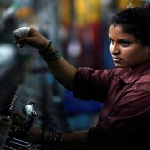
New IFC and Intellecap Report highlights INR 836 Billion Investment Opportunity for Financial Institutions in Women Owned Very Small Businesses (WVSEs). Coverage in Financial Express, CNBC-TV18, Business Standard and others
Mumbai, 09 February – On the occasion of International women’s Day, International Finance Corporation (IFC) and Intellecap, launched the report, “Opportunities and Constraints of Women Owned Very Small Enterprises in India” .
This report presents a post COVID, cluster-based landscape of Women’s Very Small Enterprises (WVSEs) in India and quantifies the untapped credit opportunity. It builds the case for financial institutions to design targeted products for this segment and provides recommendations on how these can be deployed.
Women-owned very small businesses (WVSEs) in India, with an estimated credit demand worth INR 836 billion ($11.4 billion), need the strong support of financial institutions (FIs), as per the latest report from International Finance Corporation (IFC) and Intellecap, “Opportunities and Constraints of Women Owned Very Small Enterprises in India” enabled by Intellecap. This support will facilitate their growth and drive socio-economic inclusion by eliminating existing challenges.
Launched on the occasion of International Women’s Day, the report says WVSEs face numerous challenges, including inadequate access to capital, technology and information, and infrastructure gaps. There are about 15 million women-owned MSMEs in India, and contrary to popular perception, over 70 percent of them are manufacturing enterprises, many of them home-based.
In addition to challenges mentioned, the segment of women entrepreneurs who often overcome biases from within the family and the business community, witness fractional treatment when it comes to lending. The report says FIs have traditionally catered to men-owned enterprises. The approach then limits the understanding of the operating contexts of women-owned businesses and their socio-cultural constraints. Given that most women entrepreneurs are self-financed, the lockdowns imposed during the COVID-19 pandemic have impacted their business and reduced their income.
“The COVID-19 pandemic exacerbated existing inequalities faced by India’s women entrepreneurs. This report explores how to unlock a $11.4 billion financing gap for WVSEs and charts a roadmap for financial institutions to better serve this segment in a post-COVID world,” said Wendy Werner, India Country Head at IFC. “IFC and its partners remain committed to creating an enabling entrepreneurial ecosystem so women-owned businesses can reach their full potential and contribute to India’s economic growth story,” she added.
This report identifies sectors that WVSEs operate in and highlights the characteristics of these enterprises. It also provides a granular perspective of WVSE business operations in each of the sectors including the nature of businesses they engage with and the intermediaries who provide support to them. On this basis, the report suggests ways for FIs to design new products and new processes to address the needs of WVSEs.
Amar Gokhale, Associate Vice President, Livelihoods & Gender at Intellecap said, “The underlying objective of this report, especially on International Women’s Day, is to showcase that this segment of
Read more about the Report launch across mainstream media –
Financial Express I CNBC I The Times of India I Business Standard I VC Circle I
To download the Publication- Click here

Hyderabad based AgriTech startup ‘Our Food’ raises US$ 6Mn. Transaction enabled by Intellecap
Mumbai, 28th January – Our Food, a Hyderabad based AgriTech startup with innovative, low-cost, and decentralized mini food processing units, has raised USD$ 6M (around INR-45-Crore ) in growth funding. The company plans to ramp up operations, increase manufacturing capacity and vastly improve the agricultural food supply chain that sees an estimated $5B annual post-harvest wastage in India. This funding round is led by existing investor, 3Lines Venture Capital, and a new investor, C4D Asia Fund. Lalit Jalan, 3Lines India Chairman and ex-CEO of Reliance Infrastructure, will join the company’s Board of Directors. Intellecap served as the exclusive advisor for this transaction.

Over 1,700 rural entrepreneurs have licensed Our Food Farmer Franchises, each operating a regional crop-specific processing unit that procures and processes raw material from over a hundred farmers from nearby villages. Each Farmer Franchisee is powered with an end-to-end tech-enabled solution, starting with the establishment of a single mini food processing unit, access to equipment financing, training in processing, and marketing of the processed output. Our Food has a presence in 13 states in India, primarily concentrating in Andhra Pradesh, Telangana, Maharashtra, Madhya Pradesh, Rajasthan, and Karnataka. The company has processing units for over 15 crops, including pulses, cereals, spices, groundnut, and plans to expand its crop portfolio.
“Majority of the value gained from pre-processing, reducing post-harvest wastage and supply chain disintermediation is shared between the franchise operator and the farmer that supplies the unprocessed harvest. To bring food processing closer to the farm is the mission Our Food team has worked tirelessly over the past five years and has fine-tuned the business model to develop innovative ideas in manufacturing, food processing operations, financing, and B2B/B2C sales”, said Bala Reddy, the Founder and CEO of Our Food. “This capital infusion will help us boost our capacity to over 6,000 operational franchises, gives us the right ammunition to significantly disrupt the food processing industry and position us for an IPO in 2024”, Bala Reddy added.
“Our Food value proposition is a triple play for the rural youth who operate franchises, for farmers who can increase their income through direct supply, and for the business buyers who can offer higher quality to their consumers”, said Lalit Jalan,<designation>, Our Food Pvt Ltd . “Our Food has seen a growth of over 100x in its decentralized processing over the last two years signaling a disruptive trend in Mini Food Processing”, Lalit further added.
“Our Food is the first successful model in India that has been able to scale decentralized processing of agricultural products. In-house design and manufacturing of the processing units, coupled with financing and buyback guarantee of the produce, has set up Our Food to become a pan India company in no time”, said Arvind Agarwal, CEO, C4D Partners. “Decentralized agri-processing is the key to achieving the objective of doubling of farmers income in India”, Arvind further added.
To read the coverage in Your Story – Click Here
To read the coverage in TOI – Click Here
To read the coverage in Economic Times – Click Here

Funding Rundown: Darwinbox enters unicorn club, Google plans to invest in Airtel and Germany’s KfW launches $250 mn ESG First Fund
SaaS startup Darwinbox enters the unicorn club
SaaS startup Darwinbox has become the fourth unicorn of 2022 after raising $72 million led by TCV at a valuation of over $1 billion.
TCV has previously invested in Netflix, Meta, Spotify and Airbnb among others.
Existing investors include Salesforce Ventures, Sequoia India, Lightspeed India, Endiya Partners, 3One4Capital, JGDEV and SCB 10X. After this round, the total investment raised by the company so far has gone over $110 million (approximately Rs 820 crore).
The new funding will be used for Darwinbox’s global expansion plan by allowing the company to accelerate its platform innovation agenda, strengthen its product, engineering, and customer success teams along with scaling its go-to-market presence in South Asia, SEA, and MENA. The company is expecting the overall team to grow by 100 percent and is also setting up to launch in the US in 2022.
Darwinbox, founded in 2015, works in the HR-tech space, digitising functions such as attendance, payroll and employee onboarding. It supports over 650 global enterprises across 90 countries manage HR operations from employee recruitment and attendance to engagement. Darwinbox’s customers include conglomerates such as Adani, Vedanta and JSW as well as newer internet companies such as Cars24, Vedantu and CRED.

Why Do Women Farmers Still Lack Access to Agricultural Land Ownership? Listen to the latest Quint Podcast featuring Pranab Ranjan Choudhury, Intellecap
Mumbai, 24th January – Listen to the latest episode of the Quint podcast ‘Land of a Billion’ which sheds light on the various challenges that deny women farmers access to land rights.
In this podcast, “Why Do Women Farmers Still Lack Access to Agricultural Land Ownership” Shipra Deo, Director of Women’s Land Rights at Landesa India and Pranab Ranjan Choudhury, Researcher and Founder, Center for Land Governance, Associate Director, Intellecap , talks about the various challenges that deny women farmers access to land rights and the hurdles they face in being recognised as farmers.
The 2011 census suggests that four out of five women workers in rural India work in agriculture as owner-cultivators or wage workers.
However, women farmers continue to be disadvantaged when it comes to access to agricultural land ownership, compared to men. This often denies them their rightful recognition as farmers which, in turn, inhibits them from accessing the welfare benefits that are entitled to farmers.
Lack of reliable data and poor policy framework are some of the key factors contributing to the disempowerment of women farmers.
About the Podcast
‘Land of a Billion’ brings you expert conversations about the most contentious of the holy roti-kapda-makaan trinity – the makaan over our heads – and the larger ecosystem that governs it.
From administrative tussles to understanding the conflicts on ground, catch these episodes every alternate Friday for a rundown on the latest charcha around land and property rights in India. In case you missed it, you can also catch up on Season 1 of this series here.
Hosted by Bhargavi Zaveri, a researcher interested in land and access to finance, Land of a Billion is a fortnightly podcast series produced in association with the Property Rights Research Consortium.
About the Guests
Shipra Deo leads Landesa’s work for gender-equal and inclusive land governance in India. She is passionate about the gender dimension of social development and specialises in designing and implementing gender-responsive strategies and programmes, including those related to land. In recent years she has done intensive research on inheritance by women and gendered aspects of land laws.
Pranab is a researcher and consultant on natural resources management and governance, with more than 25 years of experience. First, as a land use scientist with the Indian Council of Agriculture Research and, later, as an independent practitioner, he has worked with governments, donors, NGOs, and communities across South Asia, across landscapes, uses, and tenures. He also founded the Center for Land Governance in 2015. He presently works as an Associate Director with Intellecap.

Towards Gender-Inclusive Investing: A Co-Design Approach- Article in AVPN by Amar Gokhale, Intellecap, Jona Repishti & Saida Benhayoune from MIT D-Lab
Mumbai, 13 January – Read the article, ‘Towards Gender-Inclusive Investing: A Co-Design Approach’ Co-Authored by Amar Gokhale, AVP, Intellecap with Jona Repishti, Social Entrepreneur Manager, MIT D-Lab and Saida Benhayoune, Programme Director, MIT D-Lab.
This article is the first of a 2-part series that captures learnings from a ‘co-design’ exercise conducted with investors in India to help the move from intention to action on gender-inclusive investing. The co-design exercise comprised of five 3-hour sessions conducted virtually in October 2021.
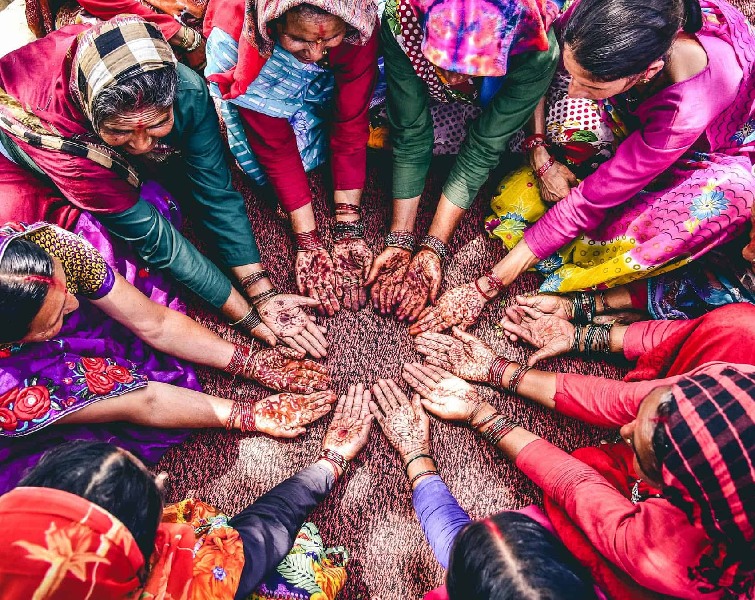
Gender Inclusive Investing, or Gender Lens Investing (GLI), is an approach to investing into companies, organizations, and funds that takes into consideration gender-based factors across the investment process to advance gender equality and better inform investment decisions.[1] Many of the funds deploying capital with a gender lens — approximately 65% of them — are newly established first-time funds (Project Sage 4.0). To close the gender financing gap, we need to bring larger pools of money, more quickly into this space. Activating well-established, mainstream investors to integrate gender into their work holds an opportunity to accelerate impact.
Could co-design — a method of bringing together users and stakeholders to generate more equitable solutions — play a role in building the field?
Inspired by MIT D-Lab’s 15-year track record in organizing design summits around the world and a small grant from Aspen Network Development Entrepreneurs (ANDE), the authors of this article went on a listening tour. We interviewed 20 impact investors and 12 ecosystem actors in India looking to learn: What incentivizes fund managers to build gender equity in their work? And also, could we leverage collaborative methods to help them unpack the challenges they face in the very early stages of their gender lens adoption journey?
Bridging the chasm between intentionality and action
We discovered multiple investors in India that were actively experimenting and trying to customize strategies for becoming more gender-inclusive. Despite growing demand, progress was slow. The reason? Creating a gender lens strategy and then leading internal reform can be time-intensive, expensive, and complex. Even the most well-intentioned and well-connected gender-pioneers struggled to bridge the chasm between intentionality and action.
Additionally for new entrants in the gender-inclusive investing space, there is a paucity of Indian role models and actionable guides to draw from. Between the DIY option of using case studies and reports, and the pay-for-support option of working closely with technical assistance providers, there is not much to draw from if neither option worked for you.
D-Lab realized that there was a unique window to use co-design to deliver value to fund managers looking for learning opportunities, actionable toolkits, and peer networks.
We teamed up with Intellecap[2], a catalytic ecosystem player in India, and organized the Co-design Sprint: Towards gender inclusive investment practices in October 2021. We invited six impact investors: Aavishkaar Capital, UC Impact, Acumen, Villgro, Omidyar India, and Accion Venture Lab, to join us. All six investors were in the process of exploring how to develop more inclusive gender investing practices, and we spotted an exciting opportunity to open up their process to participatory design frameworks and creative collaboration.
Accelerating GLI innovation and equity with co-design
Bringing co-design – the collaborative and creative process of convening a diverse set of actors to unpack complex challenges and ideate together – into the GLI space is quite new. Since GLI work at the fund level has multiple entry points, we focused on three themes: how to improve sourcing, due diligence, and gender data practices. Co-design offers a unique set of advantages for unpacking these challenges:
Inclusive: Co-design brings in diverse voices and perspectives fostering a deeper understanding of the barriers, richer ideation, and more suitable solutions.
Agile: Sprints hinge on a disciplined, facilitated, experiential process that is suited for breaking down complex problems into manageable and addressable challenges, encouraging quick experimentation and iteration to shorten the learning curve towards concrete outcomes.
Collaborative: In addition to solutions, co-design helps build relationships, incorporate different perspectives, and allows for cross-pollination of ideas – all with a focus on building understanding, fostering adoption, and community buy-in along the way.
The Co-design Sprint experience
Over the course of 5 sessions, our co-design summit welcomed 100+ participants – gender lens practitioners, entrepreneurs, investors, and thought leaders – from around the world to support our investors in the design and development of solutions. The workshop series validated that co-design delivers unique benefits to investors that are new to the GLI space:
Seeing the forest and the trees. Most of the challenges to GLI adoption stem from the difficulty of grappling with deeply rooted societal norms, unconscious biases, and long-established industry practices. Our co-design sessions focused on building mindsets for empathy, bias awareness, creativity, optimism, and openness as prerequisites to exploring challenging themes around power dynamics, privilege, and implicit biases. A participating investor noted “[because of] this workshop, I got a very different perspective on GLI and I realized how many conscious and unconscious biases are embedded in investing practices that I wasn’t aware of…” By inviting cross-pollination of different perspectives and a beginners’ mindset, co-design can offer a holistic yet disciplined approach to help fund managers detect and manage blind spots – both internal and external to the funds – in a progressive and systemic fashion.
Finding the needle in the haystack. It is not always easy to know where to start and where to focus reform efforts when you have never done such work before. The challenges and barriers that GLI advocates uncover are complex, interwoven, and systemic. This explains the analysis paralysis that many fund managers face in moving from intention to action. By emphasizing problem framing over solution ideation, co-design can help investors visualize what to prioritize first (among many possible points of entry) and discover different pathways for intervention. One investor noted: “When we started the whole exercise, the ideas were very jumbled; and now when I am seeing everything in a structured manner, it makes it easier to pick where to focus on first.”
It will take a village. After the co-design sprint, one investor noted: “My biggest takeaway is that there are many others in the ecosystem dealing with similar questions on gender and that we can get a lot more done from working with each other.” Whether it is by pooling gender performance data to build a stronger business case for GLI to LPs, co-developing industry standards for gendered due diligence processes, or collaborating on building pipelines of female-led and gender forward businesses, impact investors realized that they could reap additional benefits from taking a collaborative approach to GLI. By continuing to position forward-thinking fund managers within networks of like-minded peers and ecosystem actors, we can maximize the returns on their individual efforts and accelerate the pace of GLI adoption.
The way forward
Sometimes, co-design feels like a big upfront investment in terms of planning, coordination, and time commitment, but time and time again, we have seen that it pays unique dividends to those that engage in it. Co-design sprints may be less suitable for delivering ready-to-implement gender lens solutions, but they can serve as enriching and generative exercises that build a strong foundation for catalyzing change at both the fund and the ecosystem level.
To move the needle on GLI we should continue to leverage inclusive, disciplined co-design methods that bring industry champions together to build confidence, gain new insights, and build relationships for addressing some of the most complex challenges.
[1] As defined by the Gender Lens Investing Initiative, GIIN (Global Impact Investing Network)
Reports & Policies
Our Impact Map
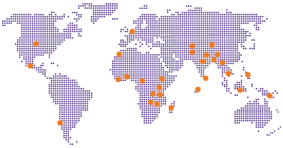
Sign up for our newsletter
© Copyright 2018 Intellecap Advisory Services Pvt. Ltd. - All Rights Reserved




